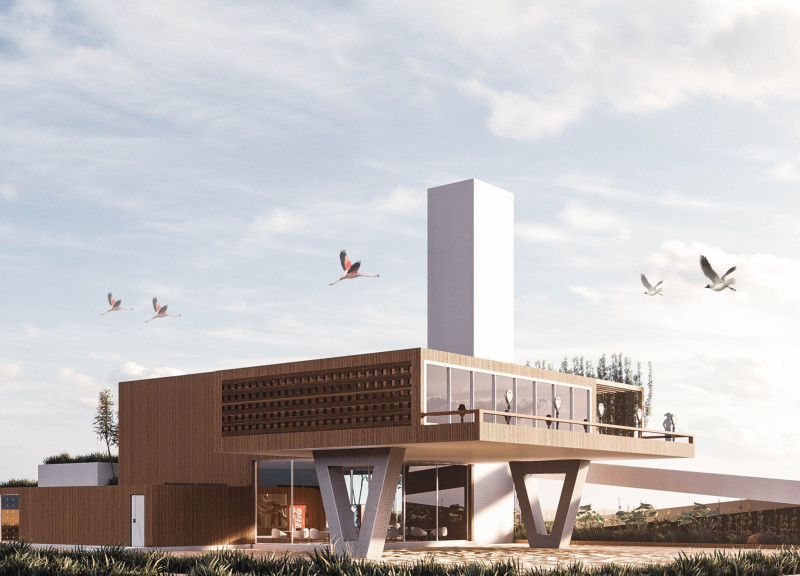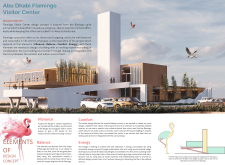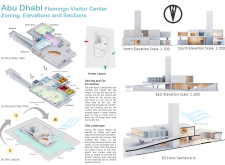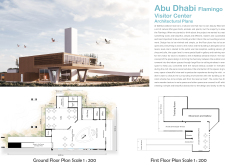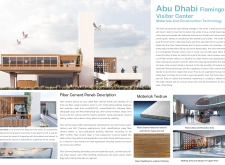5 key facts about this project
The Abu Dhabi Flamingo Visitor Center is located in the Al Wathba Wetland Reserve, an area rich in wildlife and natural beauty. The design draws inspiration from the flamingo, aiming to capture its grace, balance, comfort, and energy. The center serves both educational and conservation purposes, creating a space where visitors can engage with the environment while enjoying the surrounding landscape.
Design Concept
The layout features large glass walls that enhance the connection between the interior and the wetlands. These expansive windows allow natural light to fill the center, creating bright and welcoming spaces. Visitors can feel closer to nature, as the boundary between inside and outside is softened, inviting the landscape in.
Materiality and Aesthetic
The design follows a minimalist approach, utilizing a simple color palette that includes wood cladding and white finishes. These choices help the building blend into its surroundings instead of overwhelming them. The materials not only provide a clean aesthetic but also contribute to a sense of calm, allowing the natural environment to shine.
Sustainable Practices
A strong emphasis is placed on energy efficiency. The use of renewable energy sources, such as photovoltaic cells, is an integral part of the design. Attention to natural lighting and ventilation also helps reduce energy consumption, creating a comfortable environment for all who visit. Additionally, choosing durable materials ensures that maintenance is kept to a minimum while supporting environmental goals.
Educational Focus
The center is not just a building; it plays a key role in teaching visitors about the wetlands and their importance. It includes galleries and training spaces that engage the public and raise awareness about conservation efforts. The design caters to the needs of visitors while highlighting the critical role that nature plays in our lives.
A notable feature is the white tower, which symbolizes the flamingo's supporting foot. It serves as a focal point for the building and reinforces the connection to its defining concept, connecting architecture and nature in a straightforward yet effective manner.


